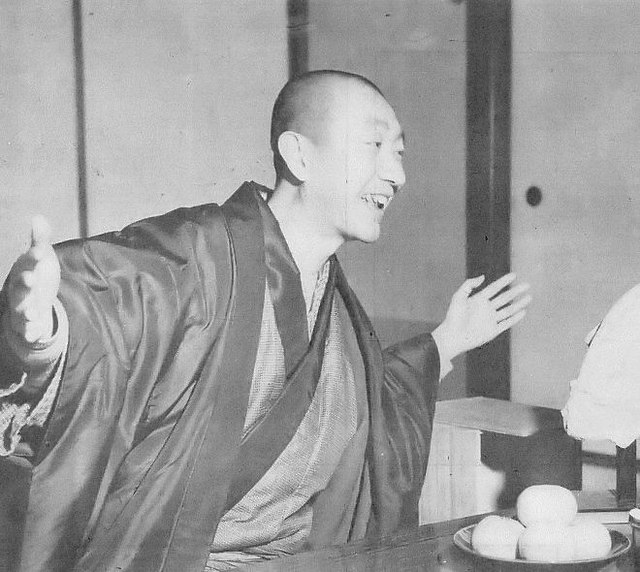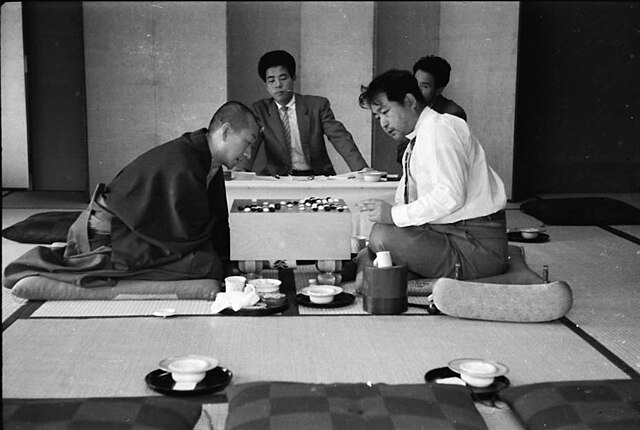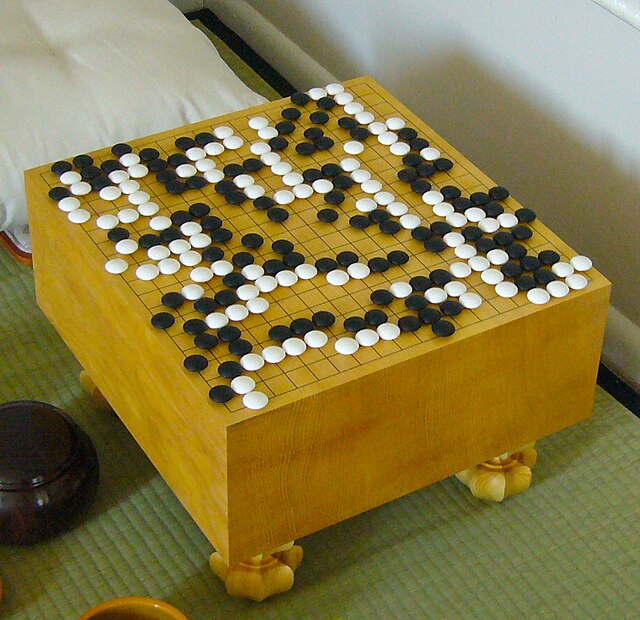Wu Chuan, courtesy name Wu Ching-yuan, better known by the Japanese pronunciation of his courtesy name, Go Seigen , was a Han Chinese master of the game of Go. He is considered by many players to have been the greatest Go player in the 20th century.
Go Seigen in 1952
Go Seigen teaching his pupil Rin Kaiho
Jubango match against Fujisawa Kuranosuke (Fujisawa Hosai)
Go is an abstract strategy board game for two players in which the aim is to capture more territory than the opponent by fencing off empty space. The game was invented in China more than 2,500 years ago and is believed to be the oldest board game continuously played to the present day. A 2016 survey by the International Go Federation's 75 member nations found that there are over 46 million people worldwide who know how to play Go, and over 20 million current players, the majority of whom live in East Asia.
Go is played on a grid (usually 19×19). Game pieces (stones) are played on the grid line intersections.
Model of a 19×19 Go board, from a tomb of the Sui dynasty (581–618 CE)
Painting of a woman playing Go, from the Astana Graves. Tang dynasty, c. 744 CE.
Li Jing playing Go with his brothers. Detail from a painting by Zhou Wenju (fl. 942–961 CE), Southern Tang dynasty.







